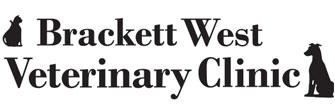Pet Travel Safety Tips

Calling all jet-setting pets and their travel-savvy humans! Who says only humans can enjoy a getaway? We're here to make sure your furry family members have a blast on every adventure. From road trips to flying, we've got the tips to turn their travel frowns upside down. Buckle up and let's make safe travel memories together.
Traveling with Pets in the Car
One of the most important aspects of traveling with your pet in the car is making sure that they are safely secured and cannot roam around the vehicle. This not only allows the driver to fully concentrate on the road but also protects you and your pet in the event of an accident. While pet seatbelts are widely used and available, the safest travel method is securing your pet in a crate. This fully removes distractions from the driver, prevents the pet from running away or jumping out the window, and adds an additional protective layer if ever in an accident.
- Avoid allowing your pet in the front seat of the vehicle. If an airbag deploys your pet can be severely injured.
- Do not leave your pet unattended in the car. Unfortunately, there are people who may be looking to steal your adorable pet, and high or low outdoor temperatures can be fatal. Remember, if it is hot outside, it is even hotter in the vehicle.
- No matter how much they may love it, do not allow your pet to stick their head out the window. This can cause harm to their eyes.
- Do not transport your pets in the back of an open or flatbed truck.
- Take them potty often! Avoid accidents and most importantly, give them the opportunity to stretch their legs.
Traveling with Pets by Plane
Traveling by plane is not the most suitable method for pets and should only happen when there are no other viable options. Flying can be especially dangerous for pets with brachycephalic faces like pugs, bulldogs, and Persian cats. These animals have an increased risk of heat stroke and oxygen deprivation due to their nasal anatomy. If it is necessary to have your pet travel via airplane, always have them in the cabin with you. Keep in mind that this is more expensive and some airlines may have restrictions in terms of your pet’s size and their carrier. Before your flight, please make sure that you are fully prepared and comply with the airline’s policies. Note that each airline has different policies. To find out more about your airline’s pet policy, please contact them directly.
Just as you do, your pet will need to go through security. To expedite this process, be prepared to restrain your pet while their carrier is being inspected.
If your pet is unable to fly in the main cabin and there is no other transport option available, please know that the risk of your pet being lost, injured, or even killed while traveling below the main cabin is a possibility. Unsecured crates, turbulence, handling, poor ventilation, and drastic temperature fluctuations cause these unfortunate events.
To increase the chances of your pet having the most pleasant and safe trip, please consider the following:
- If you plan to travel by car or plane with your pet to another state or internationally, your pet may require a certificate of veterinary inspection. Obtaining a pet health certificate is time-consuming. Preparation for travel can take several weeks to months to plan and each country has its own requirements and timelines. Visit the USDA’s website for more information.
- Fly direct! Layovers are not fun for anyone.
- Don’t send your pet on a solo expedition. Make sure you are on the same flight.
- Keep a picture of your pet handy while traveling in case your pet goes missing. This makes finding them a lot quicker and smoother.
- Avoid feeding your pet 4-6 hours before your trip to ensure that they are not forced to hold their bowels during the flight or have an accident. Small amounts of water given throughout the travel are encouraged to prevent dehydration.
- Be sure to let the flight crew know that there is at least one pet traveling below the main cabin.
- Make sure that your pet has all ID tags secure on their collar and that your pet is microchipped.
- Do a thorough once-over of your pet before and after your flight. If you notice any changes in their behavior or appearance, take them to a vet immediately.
- Get your pet comfortable and familiar with the carrier weeks before the flight.
- Keep your contact information in the crate or somewhere on the carrier.
- Do research before booking your flight to choose a time with the least amount of temperature changes. If it is going to be a hot day, try to travel in the evening when the temperatures are more comfortable and tolerable. If you are traveling on a cold day, try to travel during the day when it is typically warm.
Call us at (207) 747-5733 if you have any questions about safe pet travel. We are ready to lend a helping paw to ensure your journey is smooth sailing from start to finish.
